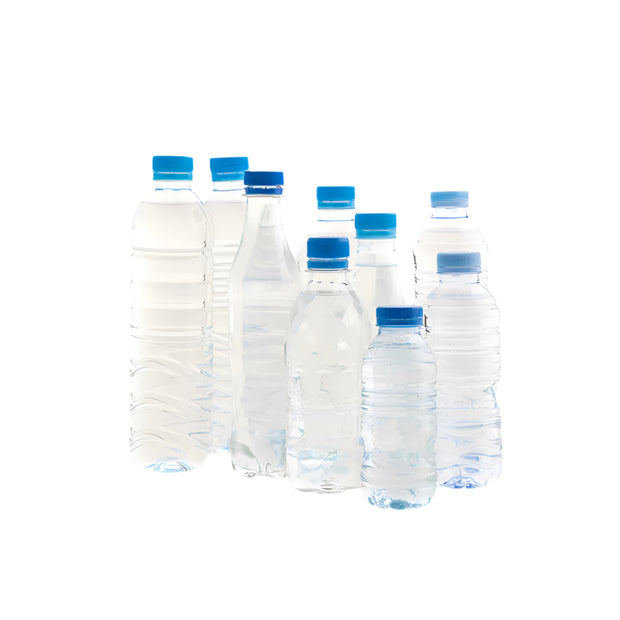-

+/- 15 to 25
-

From waste to wardrobe – the power of recycled fabrics
- , by Someone You Know
- 1 min reading time
From bottle to garment – a second life for plastic At Modnaro, we transform discarded PET bottles into high-quality, sustainable fashion. Every year, millions of plastic bottles end up in landfills and oceans, polluting ecosystems and contributing to the environmental crisis. By repurposing plastic waste into premium recycled polyester, we reduce our reliance on virgin resources and promote a circular fashion economy. In this blog, we take you through the journey of how plastic bottles become stylish, durable garments – from collection and cleaning to spinning fibres and final production. Discover how choosing recycled polyester helps keep waste out of landfills while maintaining the quality and performance of traditional fabrics. Make a conscious fashion choice and be part of the change – one bottle at a time.

From bottle to garment: A second life for plastic
Waste is only waste if we fail to reuse it. At Modnaro, we believe in transforming discarded materials into high-quality fashion that makes a difference. By repurposing PET bottles into premium fabrics, we help keep plastic out of landfills, reduce environmental impact, and eliminate the need for virgin, petroleum-based polyester.
The problem with plastic waste
Every year, millions of plastic bottles end up in landfills and oceans, polluting ecosystems and endangering wildlife. Traditional polyester, derived from crude oil, further worsens this crisis by consuming vast amounts of energy and depleting non-renewable resources. However, by transforming plastic waste into fabric, we can close the loop on waste and make fashion part of the solution.
Why choose recycled polyester?
Polyester is a fashion industry staple, valued for its durability, lightweight feel, and resistance to shrinking, stretching, and wrinkling. However, virgin polyester is made from petroleum, which drives fossil fuel extraction and contributes to environmental degradation.
By switching to recycled polyester, we reduce our dependence on virgin resources while maintaining the same high-performance qualities that make polyester so popular.
The plastic problem and a circular solution
The production of virgin polyester depletes fossil fuels and contributes to the global plastic crisis. Every year, millions of PET bottles are discarded, ending up in landfills or polluting oceans. By choosing recycled polyester, we actively reduce plastic waste and support a circular fashion economy—turning discarded plastic into high-quality fabrics.
Depending on the style, each pair of our swim shorts repurposes 15 to 25 plastic bottles (550 ml each), preventing them from ending up in landfills and giving them a new life as durable, functional, and stylish garments.
How PET bottles are transformed into garments
Recycling PET bottles into high-quality garments is a step-by-step process that turns plastic waste into durable, stylish, and sustainable fashion.
The journey from bottle to garment
At Modnaro, we work with innovative partners to transform discarded PET bottles into premium fabrics used in our collections. This process involves advanced recycling techniques, ensuring that every piece we create contributes to reducing waste and promoting a circular fashion economy.
-

1. Gathering and selecting materials
The process starts with gathering used PET bottles, commonly found in beverage packaging and everyday consumer products. Once discarded, these bottles are directed to recycling facilities or dedicated collection points. To maintain the integrity of the recycled material, they undergo a meticulous sorting process based on colour and composition—an essential step to ensure high-quality results. -

-

2. Cleaning and breaking down the material
After sorting, the PET bottles go through an intensive cleaning process to eliminate any residues, labels, and adhesives, ensuring the material is free from impurities. Once cleaned, the bottles are shredded into fine flakes, which serve as the foundation for creating high-quality recycled polyester.
-
)
-

3. Melting and transforming into raw material
The cleaned PET flakes are melted down and reshaped into small pellets. These tiny pellets act as the base for producing polyester fibres, marking the point where discarded plastic begins its transformation into a valuable, reusable resource for sustainable fashion.
-

-

4. Spinning the fibres
The pellets are melted once more and drawn into fine polyester fibres through a process called melt spinning. This stage allows precise control over the thickness and length of the fibres, ensuring they meet the specific needs of the fabric being created.
-

r
-

5. Weaving and garment production
The polyester fibres are spun into yarn and woven into a strong, breathable fabric. This high-quality material is then used to craft durable and stylish garments, ensuring both performance and sustainability in every piece.
-

Why choosing recycled fashion makes a difference
By turning discarded plastic into high-quality garments, we are not only reducing waste but also rethinking the way fashion is made. Every piece created from recycled polyester helps lower our reliance on virgin resources, supports a circular economy, and brings sustainable fashion to life. Choosing garments made from recycled materials means making a conscious decision to protect our planet one bottle at a time.
Blog posts
-

, by Someone You Know Keep your organic garments looking their best
-

, by Someone You Know A new era of conscious style with sustainable eco-fashion
-

, by Someone You Know From waste to wardrobe – the power of recycled fabrics











